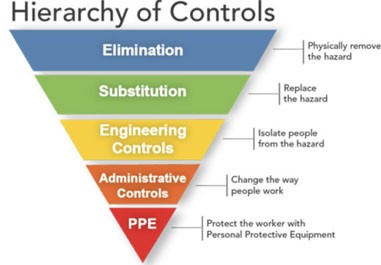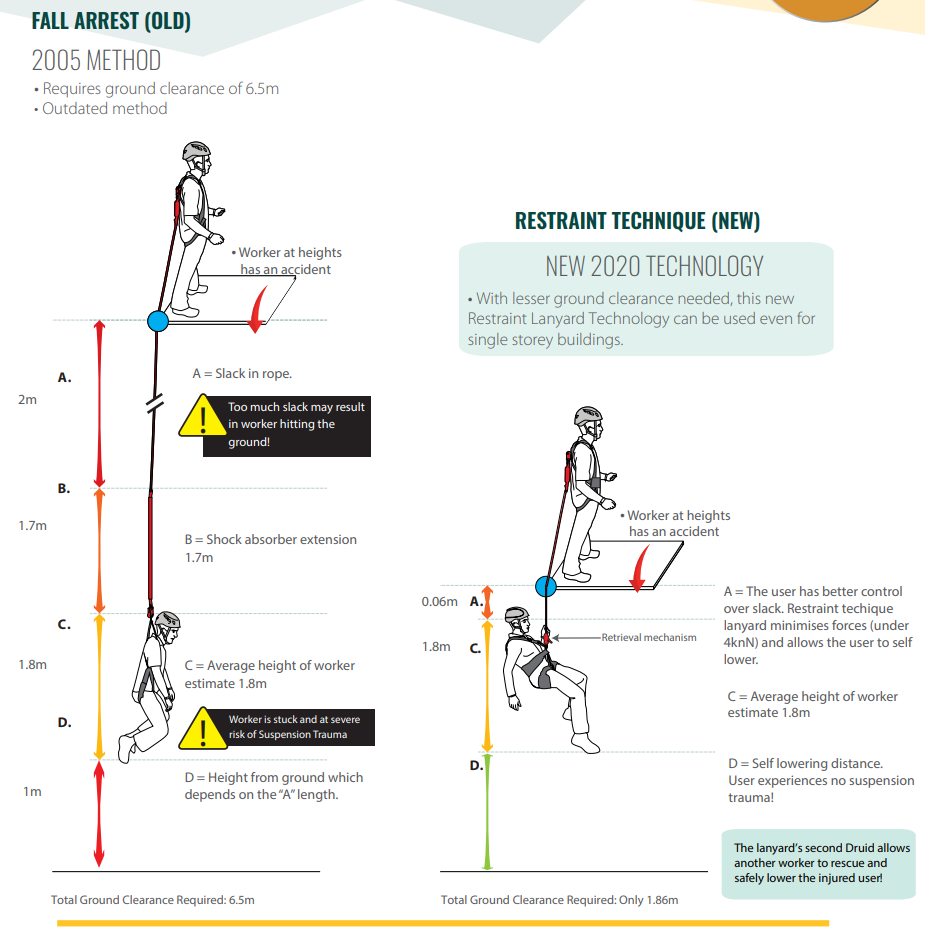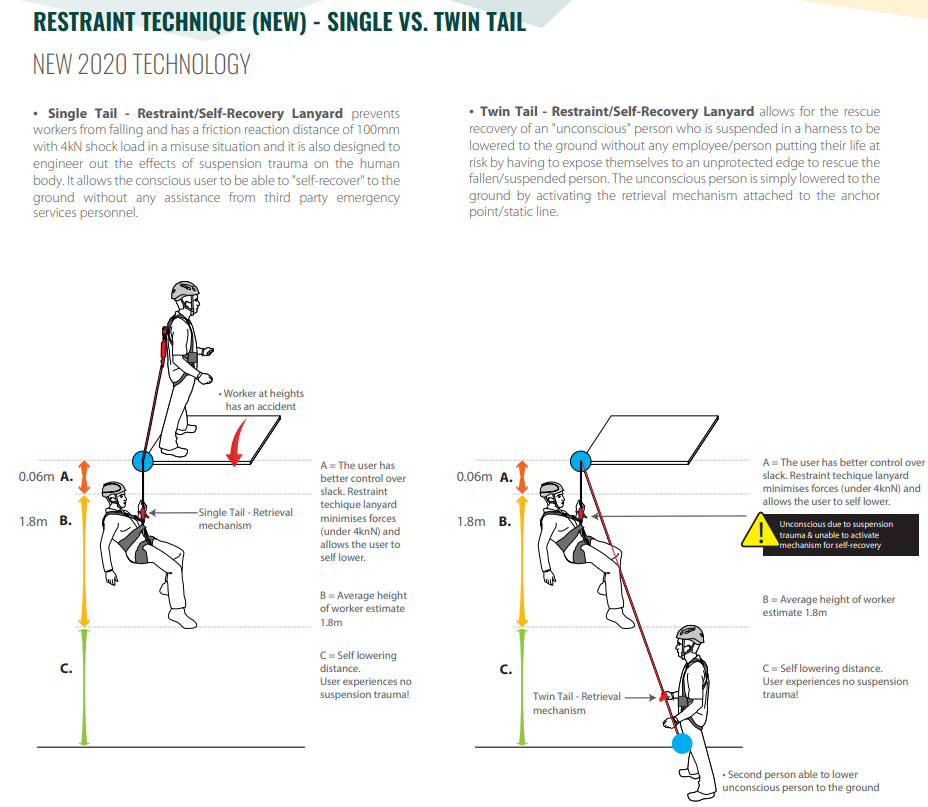HIERARCHY OF CONTROLS
The Restraint/Self-Recovery Lanyard is classified under the category of “Engineering Controls” (2 levels safer than PPE) and adheres to AS/NZS 1891.1/3

RESTRAINT TECHNIQUE/SELF-RECOVERY LANYARD – SINGLE TAIL
Saferight has engineered a new 2020 technology – Restraint/Self-Recovery Lanyard, that prevents workers from falling and has a friction reaction distance of 100mm, with 4kN shock load in a misuse situation. This lanyard represents ground breaking technology, and does not only stop your workers/employees from the possibility of falling from one level to another, it is also designed to engineer out the effects of suspension trauma on the human body eg. it allows the conscious user to be able to “self-recover” to the ground without any assistance from third party emergency services personnel. The design of the Restraint/Self-Recovery Lanyard allows the user to operate at the highest levels of safety as per the Hierarchy of Control eg. “Restraint Technique” as a Fall Protection Engineering Control, which eliminates the possibility of a fall when used in accordance with the manufacturer’s recommendations for safe use, which ensures the user cannot fall.
RESTRAINT TECHNIQUE/SELF-RECOVERY LANYARD – TWIN TAIL
Saferight also provides a Restraint Technique/Self-Recovery Lanyard – Twin Tail which is recommended for tower access. It can also be used with static lines on roofs as a lanyard system to gain access to a gutter line etc. The benefit of the Twin Tail Lanyard is that it allows for the rescue recovery of a “unconscious” person who is suspended in a harness to be lowered to the ground without any employee/person putting their life at risk by having to expose themselves to an unprotected edge to rescue the fallen/suspended person.
The unconscious person is simply lowered to the ground by activating the retrieval mechanism attached to the anchor point/static line. In this manner, rescue recoveries which were highly technical operations conducted by highly skilled emergency services personnel can now be conducted simply and safely by any person without risk to that person.
BENEFITS OF THIS TECHNOLOGY:
The added benefits of the Restraint/Self-Recovery Lanyard is that it does not have to be thrown away/destroyed if an accidental fall occurs due to user error eg. allowing slack in the system and using the lanyard for Fall Arrest and not the preferred Restraint Technique. The lanyard is designed to absorb the shock load quickly and efficiently with the minimum extension to ensure maximum safety regarding ground clearance requirements. Unique benefits of this technology includes:
- Stops falls from occurring (Video shown above)
- Reduces ground clearance requirements from 6.5m (current technology) to 1.86m (NEW 2020 technology) which protects workers involved in single storey building construction etc. When used as per the manufacturer’s instructions, there is zero fall distance “Restraint Technique”
- Built-in self-retrieval to the ground
- Auto locking brake system
- Auto locking speed limit (avoids misuse situations/will automatically stop)
- Simple and easy to reset after brake has been activated (simple to use)
- Easy to adjust unwanted slack from the lanyard system between the user and the anchor point
- The lanyard is reusable after an accidental fall (no need to destroy/throw away) when used in accordance with the manufacturer’s instructions for safe use
- Australian standards tested and certified (Fall Arrest Rated) (This is the highest level of Strength Rating covered under the Australian standards, not to be confused with a work method. Fall Arrest Rated not Work Method). Work Method recommended is Restraint Technique.
- Simple, light weight, practical and robust.
- Restraint Technique/Self-Recovery Lanyard- Twin Tail allows third party to activate the rescue recovery mechanism without the person having to leave the safety of the ground or expose themselves to a unprotected edge. (Video shown above)
Please Note:
Lanyard length should be equal to the distance from the anchor point to the ground. This distance may change depending on the work being conducted and should be conducted/calculated in Risk Assessment/Job Hazard Analysis (JHA).
MORE DETAILS:
- View more details on our product page.
- Data Sheet









